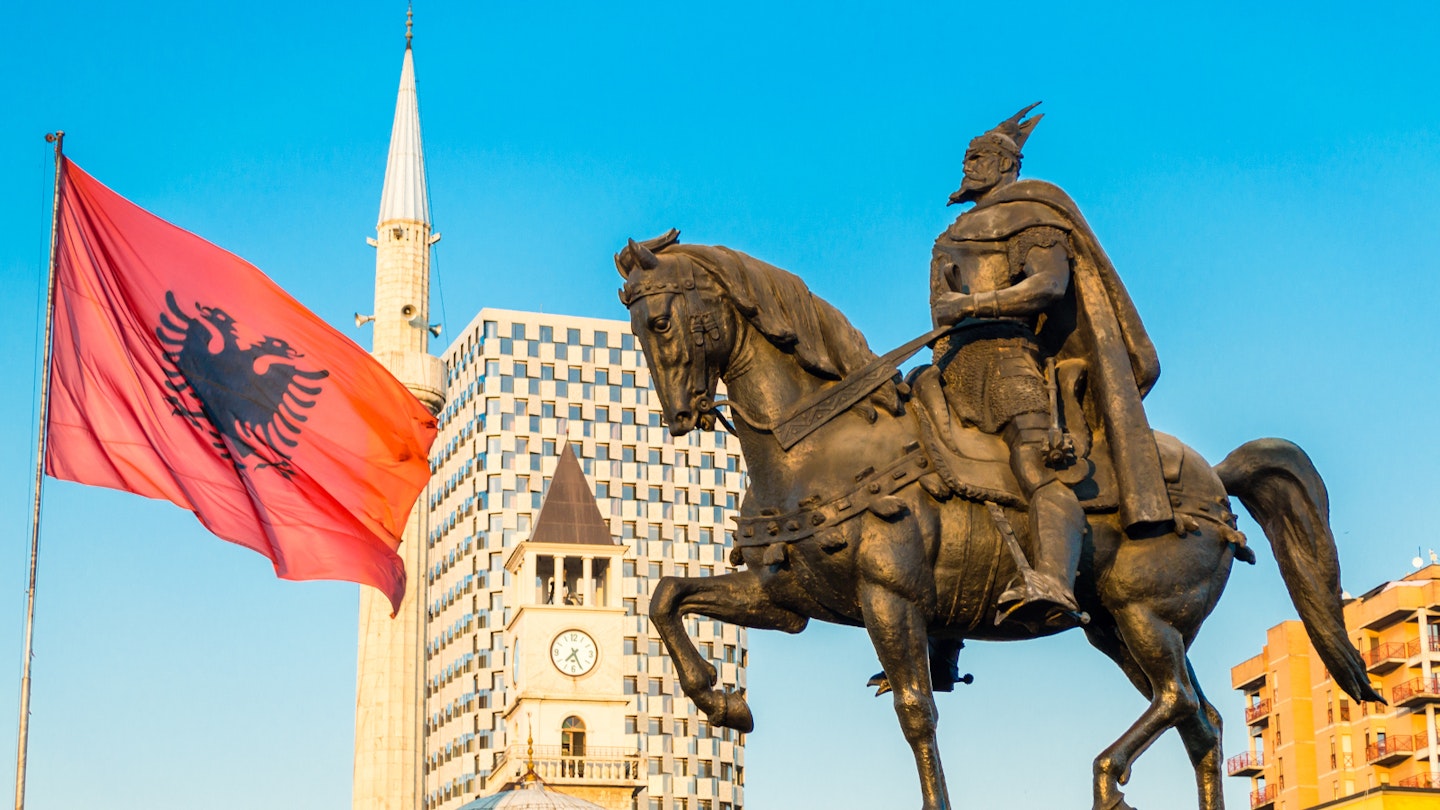Discover Tirana: Albania’s Thriving Capital
As far as travel hubs go, Tirana has a perfect setting. Albania’s capital is squeezed between the Adriatic Coast beaches and the hiking trails of the so-called Accursed Mountains, part of the larger Western Balkans’ Dinaric Alps. However, don’t be fooled – this is no mere gateway town.
Visitors tend to stay awhile because the city bustles with vigor and a burgeoning confidence fueled by old-world hospitality and a refashioned aesthetic. Bland, concrete-grey buildings have transformed into canvases for a Pantone rainbow of creativity. Commuters are increasingly encouraged to pedal rather than drive, and green spaces have reclaimed their rightful prominence amidst the town’s eclectic architecture.

Those attributes are merely physical; what gives the urban tableau its flavor is the delightful juxtaposition of culture and eras. This Albanian nexus layers Illyrian, Roman, Ottoman, and Italian influences throughout its storied history. The city serves as a study of contrasts where reminders of an iron-fisted, post-WWII communist legacy are scattered around a metropolis peppered with farm-to-table restaurants and modern cocktail lounges.
From above, dangling in a Dajti Express gondola that connects Tirana to the looming 1611m Mt Dajti, this architectural and cultural mélange throbs with activity. The central synapse is Skanderbeg Square, which bisects the main boulevard and is flanked by the National History Museum, the Et’hem Bey Mosque, and the National Theatre. As the cable car glides higher, the cityscape gives way, fading into dense forests of conifers and beech trees which dominate the 293-sq-km Mt Dajti National Park.

Owning the Past
Albanians make no attempt to hide their history. On the contrary, they embrace it as a badge of honor for what has been overcome. For instance, when asked about must-see attractions around the city, residents will nearly universally list spots that highlight the country’s previous despotic regime, led by dictator Enver Hoxha, who isolated an entire population for four and a half decades, from the end of WWII until 1991.
The House of Leaves is the newest site addressing this difficult period and the paranoia that engulfed the country. The former headquarters for Albania’s National Intelligence Service, it opened as the Museum of Secret Surveillance in 2017. The space acts as a brutal reminder of how twisted unchecked power can be, keeping files – or ‘leaves’ – on citizens.

Two other museums, Bunk’Art and Bunk’Art 2, shine a light on paranoia from a different perspective – one in which citizens were actively enlisted through the hundreds of thousands of bunkers built across the country aimed at protecting Albanians from foreign invasion. The first Bunk’Art, opened in 2014, is housed in the atomic shelter built for Hoxha, granting visitors access to his living quarters and spaces repurposed as historical exhibits. Bunk’Art 2, meant to protect the Minister of the Interior in case of a nuclear attack, features 24 rooms, including art installations and exhibits dedicated to the country’s timeline from 1913 to 1991.
From Blloku with Love
The Blloku district, a 10-minute walk south of Skanderbeg Square across the Lana River, provides another innovative example of the past reinvented. Once reserved for the regime’s corrupt communist elite, the area’s grid of streets is now filled with trendy restaurants, lounges, and designer boutiques.

At sunset, before mixing it up with the chic crowd that frequents the area, order a cocktail at Rooftop XVI on the 16th floor of the Sky Tower. Enjoy the panorama and get your bearings, then head down to street level for a second round at Radio, a laid-back haven for 30- and 40-somethings featuring a stellar array of whiskies, antique radios, and lively music.
‘In some ways, Blloku exemplifies how the city has completely redefined itself,’ notes Gent Mati, a lifelong resident of Tirana and owner of Outdoor Albania, a company specializing in adventure tours. ‘The citizens took a space that was once restricted and revitalized it with a modern spirit.’

Food at Human Speed
Since the end of the communist era, a farm-to-plate philosophy has become central to Albania’s self-definition. The demand for fresh ingredients aligns well with the Slow Food movement dedicated to preserving food biodiversity and honoring local heritage – a more human-paced ethos.
‘Being isolated for 50 years contributed to the conservation of Albanian seeds and species, although those cultivated were primarily high-yield crops, and there were no foreign influences on food production,’ explains Katia Zene, coordinator of the Slow Food Chefs Alliance in Albania. She believes supporting small food producers represents a significant shift away from industrialization towards healthier choices. ‘The Albanian kitchen is naturally a slow one, harmonizing perfectly with the Slow Food philosophy and principles.’

To truly experience Albanian cuisine, drive 11km from the center of Tirana to Uka Farm, where dishes are crafted from ingredients grown on the 2-hectare site abundant with olives, fruit trees, and grapevines. Order the chicken served with polenta, complemented by roasted seasonal vegetables like zucchini and eggplant, and salads brimming with just-picked tomatoes and cucumbers. Afterward, relax with a bottle of Uka’s own red Chimaera – a blend of Merlot, Cabernet Sauvignon, and Albania’s native Kallmet – as you raise a toast to Tirana.




